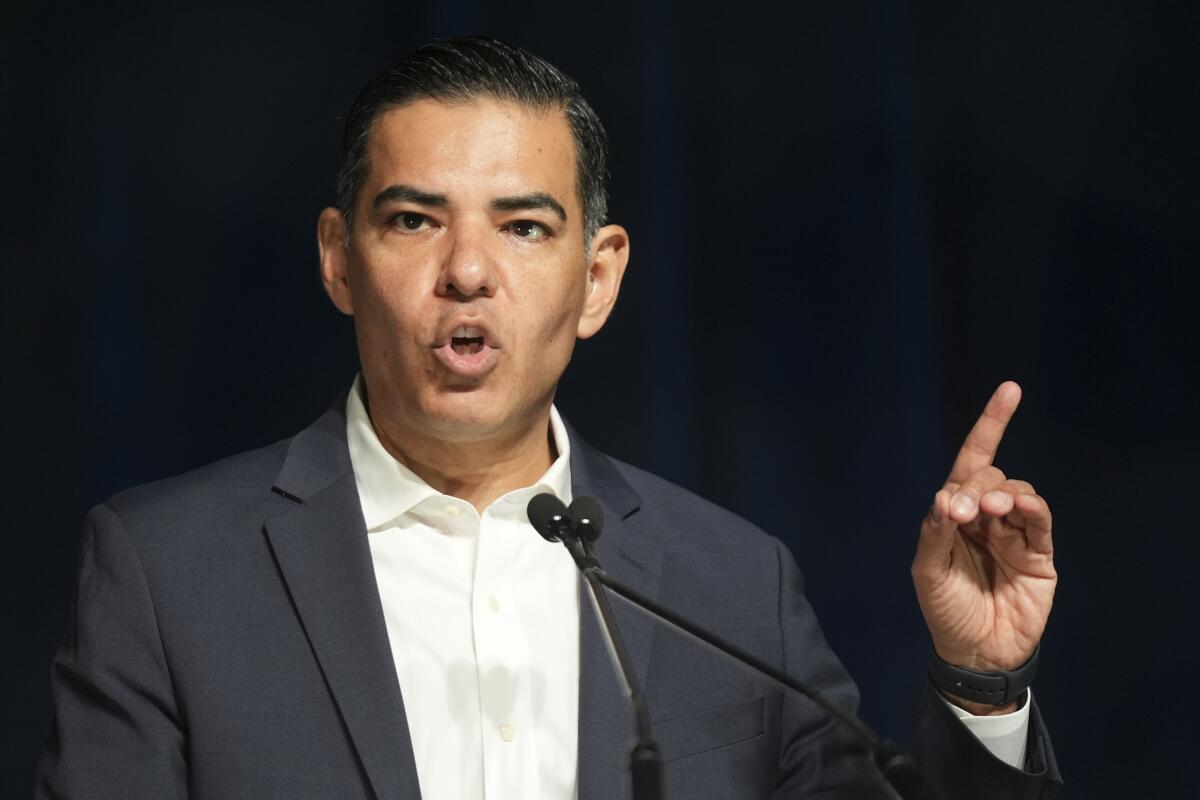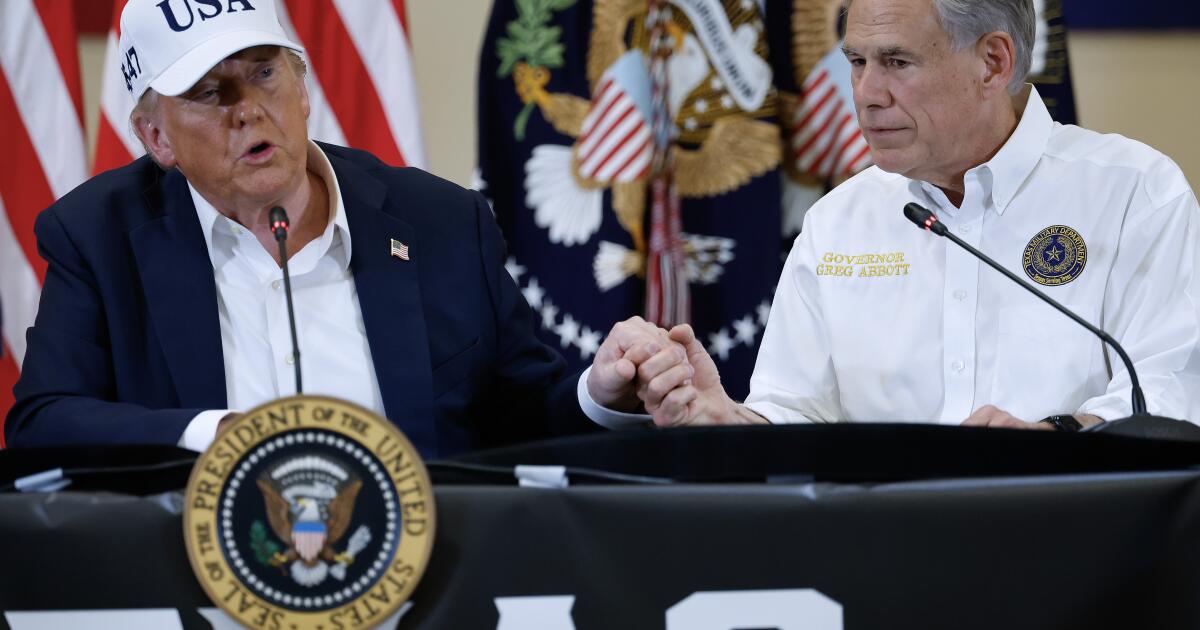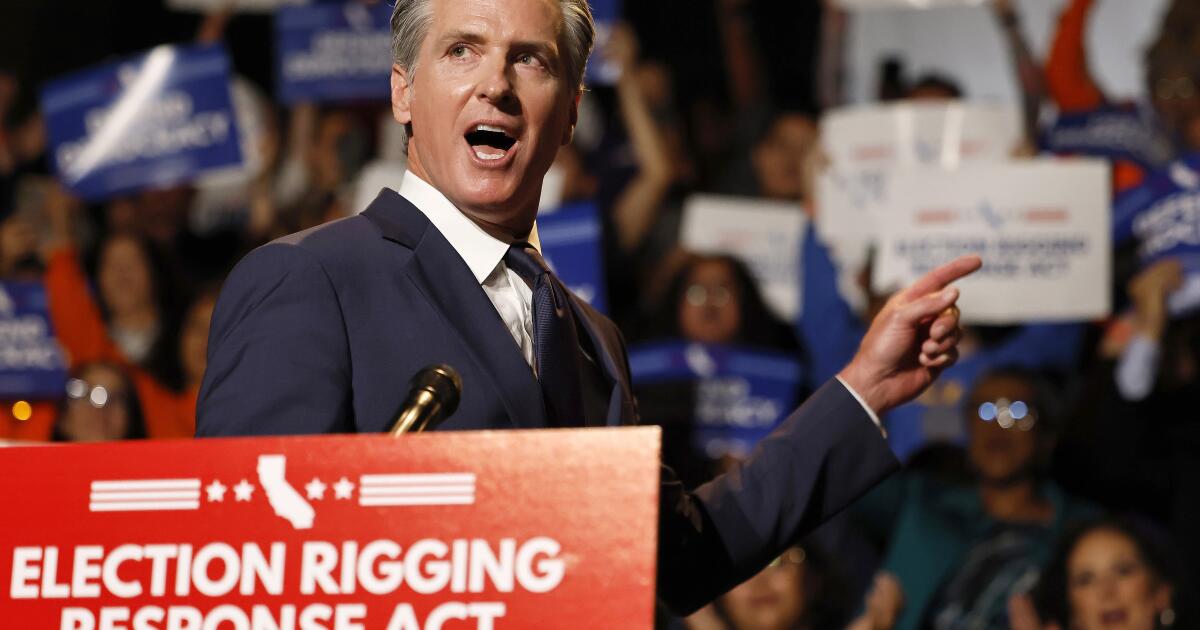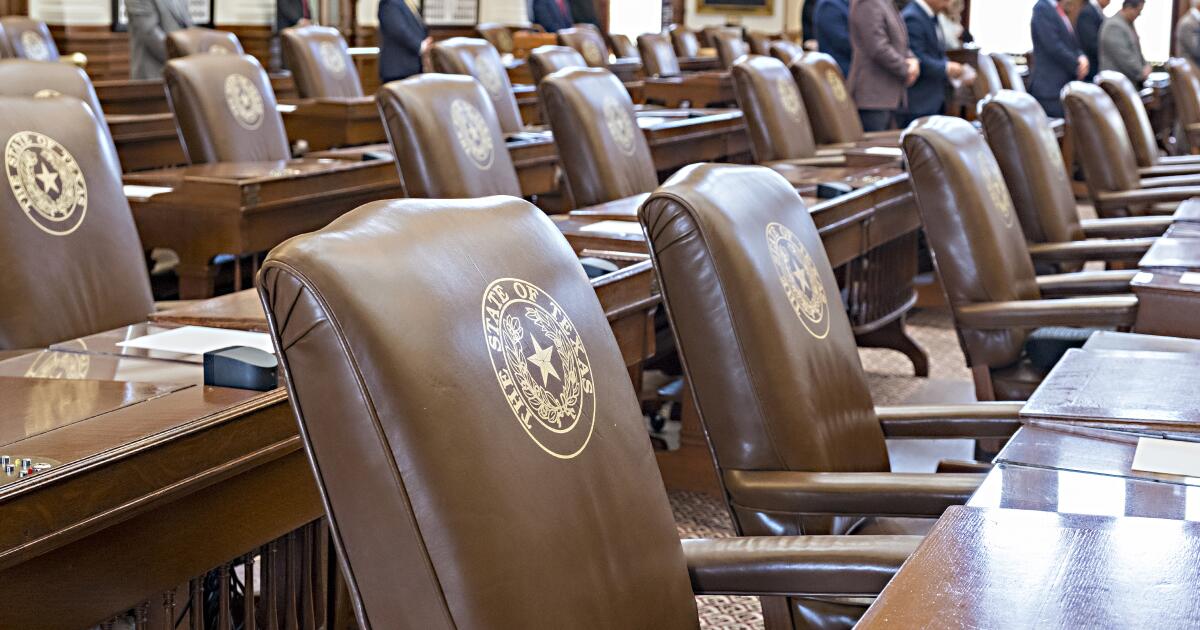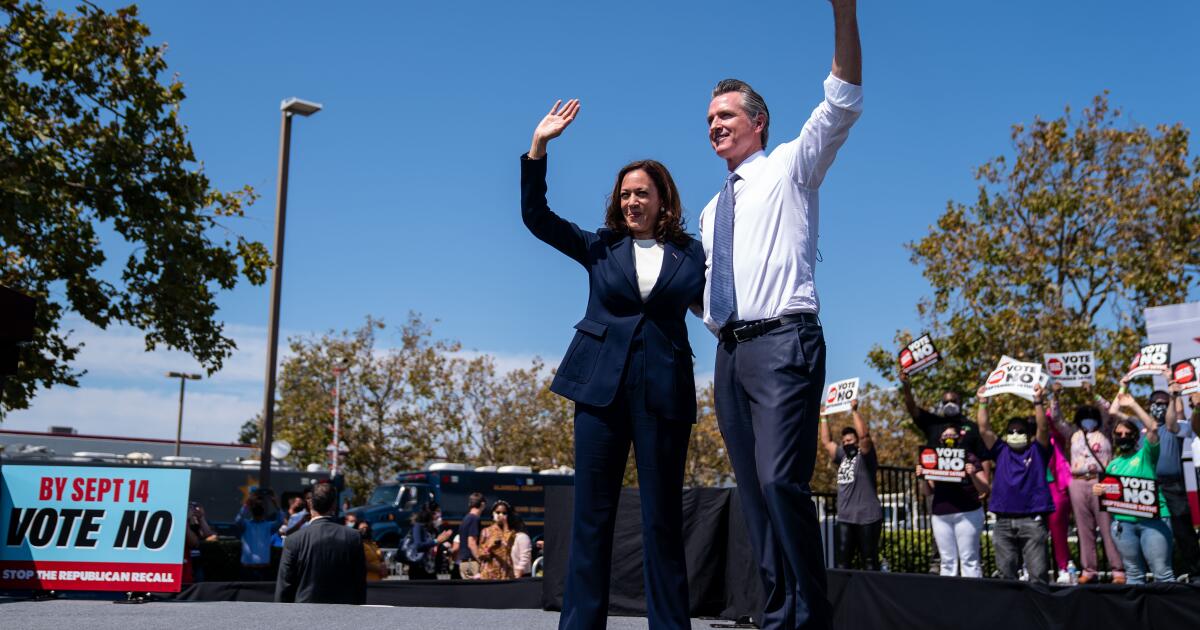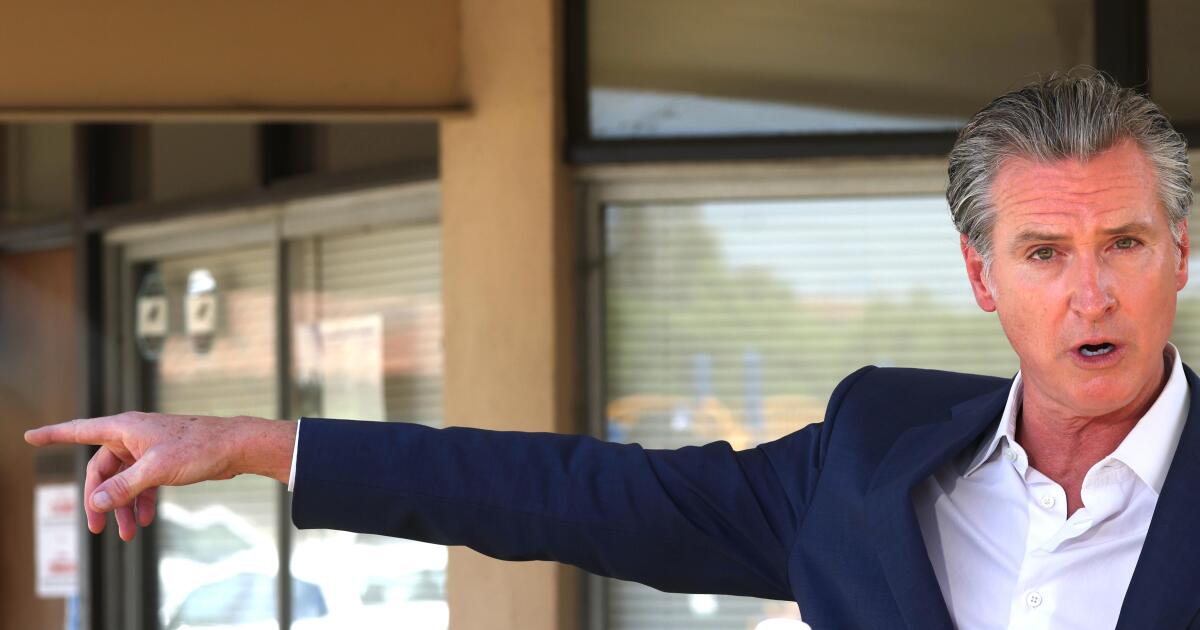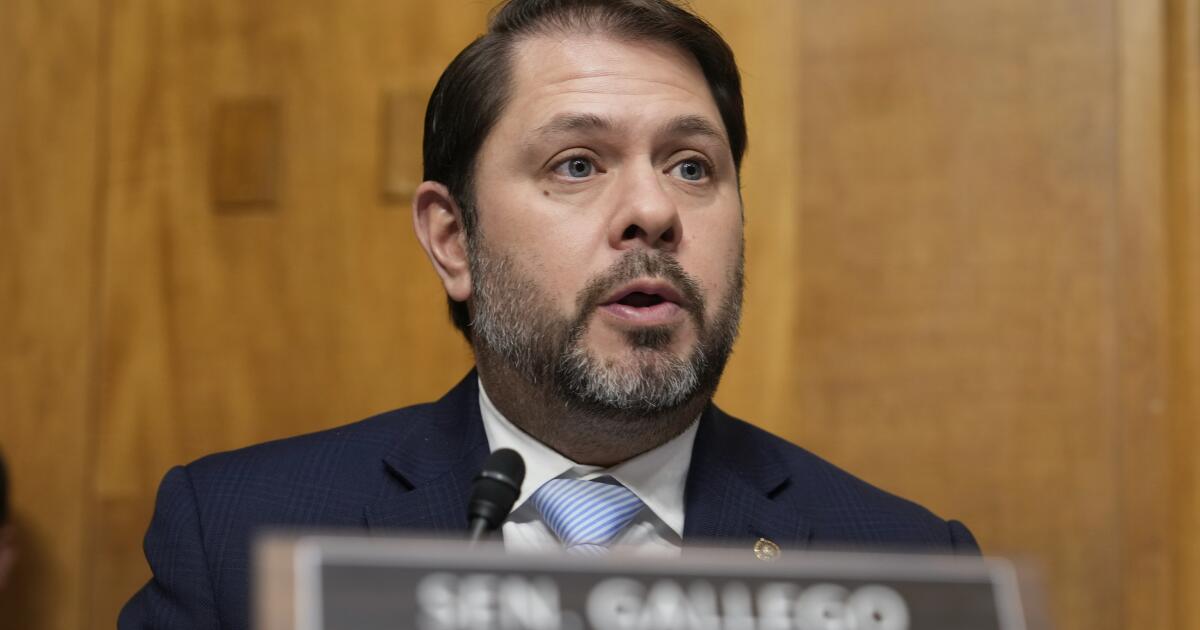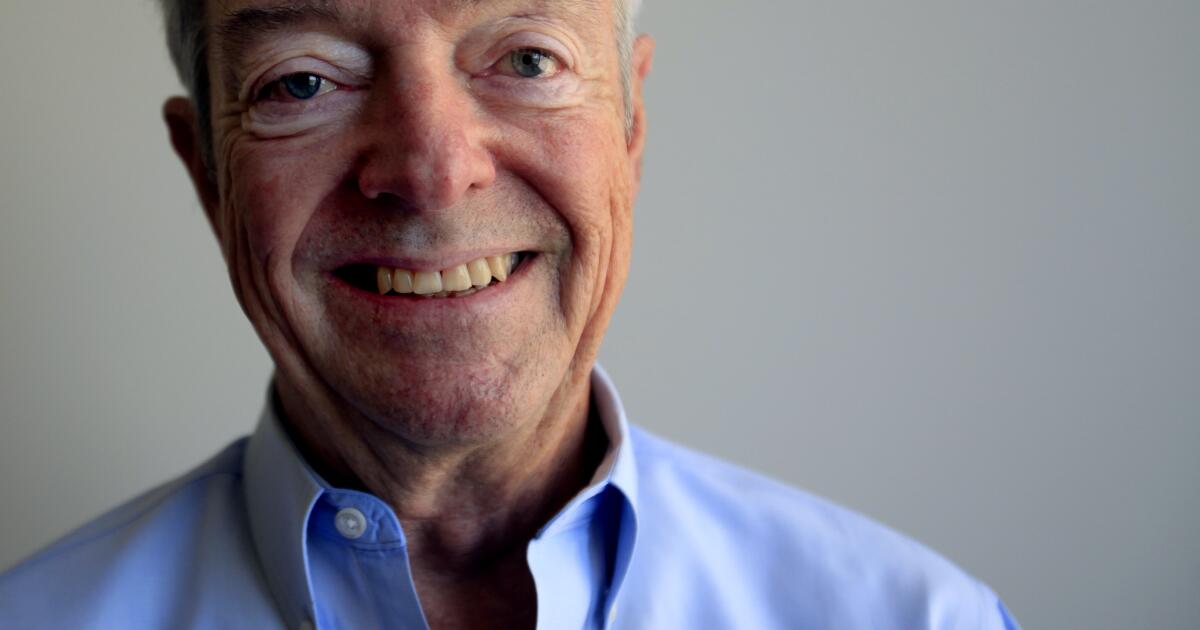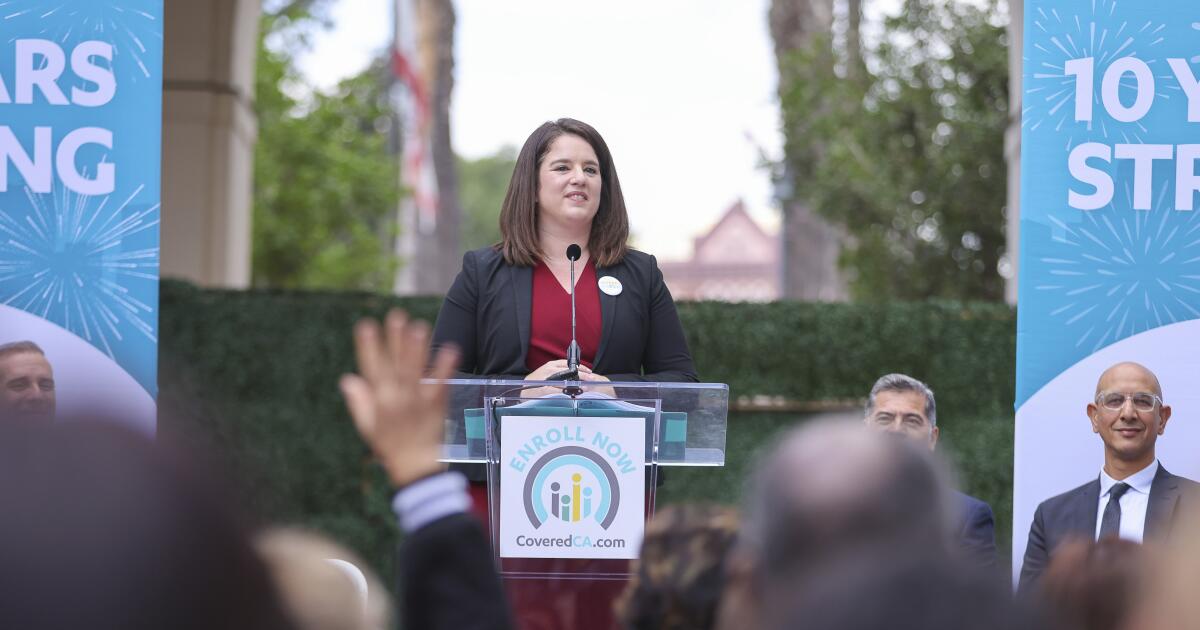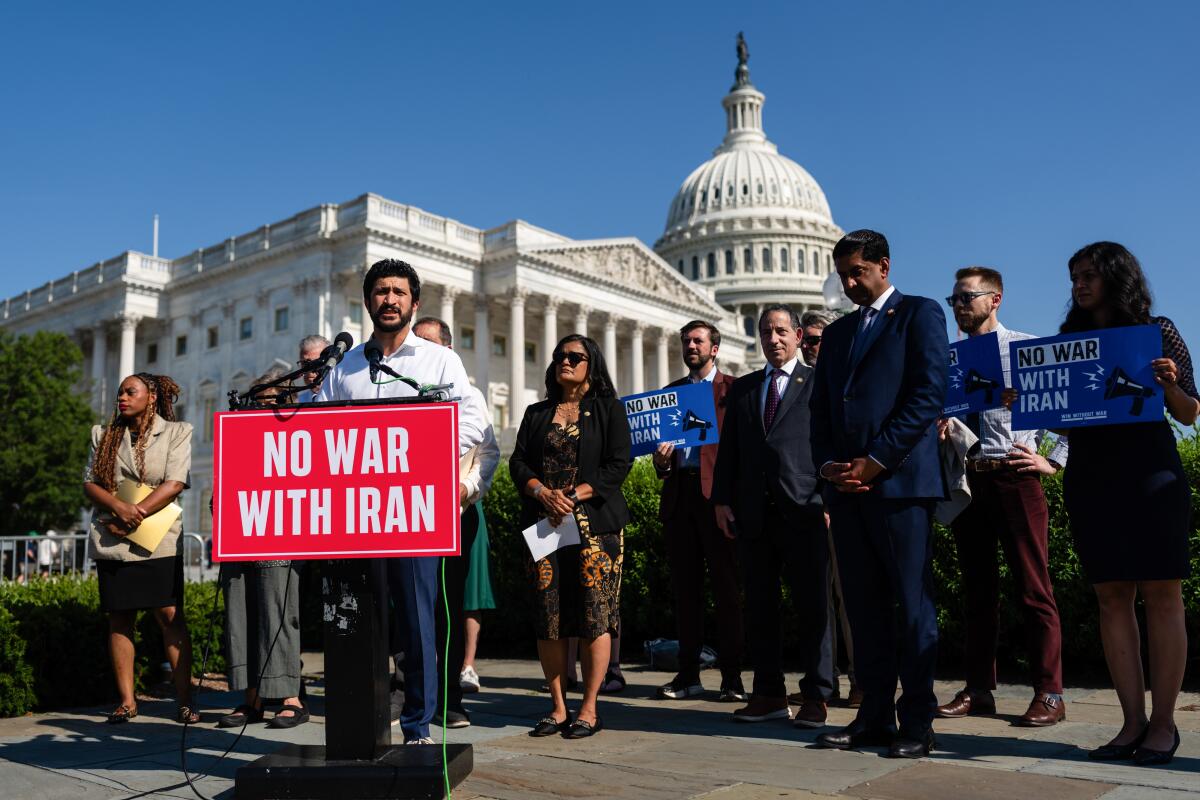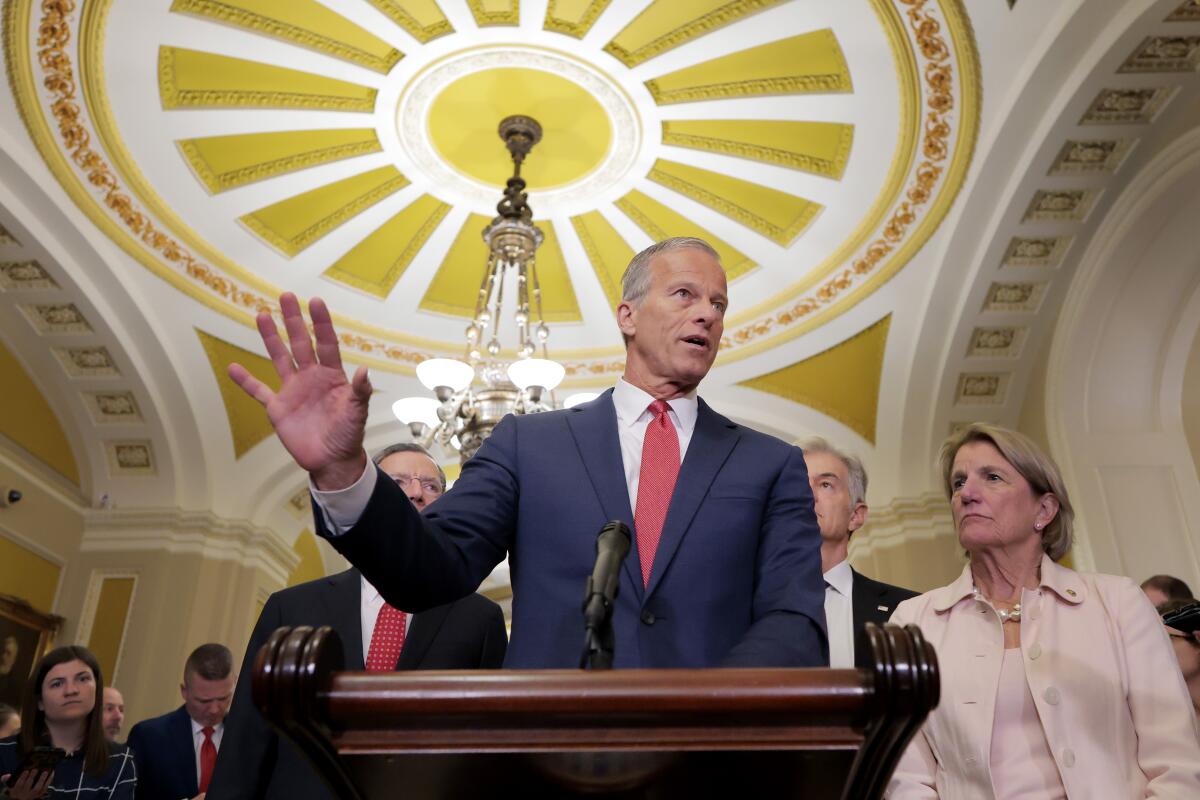As Congress returns, so does the Epstein scandal
WASHINGTON — The ghost of Jeffrey Epstein is back in Washington as Congress prepares to return for the fall.
Republican House Speaker Mike Johnson called an early start to summer break in July, attempting to shut down bipartisan clamor for the full release of the Epstein files. But Democrats are eager to launch back into a scandal that has dogged President Trump and divided his MAGA base.
Rep. Ro Khanna, a California Democrat, plans to partner with Republican Rep. Thomas Massie of Kentucky to quickly force a vote on the House floor ordering the Justice Department to release its entire trove of documents from the investigation of Epstein, a convicted sex offender who abused hundreds of women and girls.
Newsletter
You’re reading the L.A. Times Politics newsletter
George Skelton and Michael Wilner cover the insights, legislation, players and politics you need to know in 2024. In your inbox Monday and Thursday mornings.
You may occasionally receive promotional content from the Los Angeles Times.
The success of the measure is far from guaranteed. It is unclear whether the Justice Department would even abide by it. But Democrats plan to make sure the issue does not go away, regardless of its outcome, multiple Democratic aides said.
Democratic lawmakers’ focus on Epstein will be “high” out of the gate once Congress returns after Labor Day, one senior House Democratic staffer told The Times.
Republicans “will not want to be put in a position of voting against disclosure,” said the staffer, who requested anonymity to share internal discussions. “The same thing that tripped up Johnson in July is still there.”
California Dems lead charge for release
Rep. Robert Garcia (D-Long Beach) has pushed for the release of the Epstein documents.
(Damian Dovarganes / Associated Press)
Epstein, a wealthy financier with a deep bench of powerful friends, died in a New York City prison in August 2019 facing federal charges in a sprawling child sex trafficking conspiracy.
The charges followed reporting by the Miami Herald of a scandalous sweetheart deal brokered by federal prosecutors in Florida that had allowed Epstein to serve a months-long sentence, avoiding federal charges that could have resulted in life imprisonment.
The chief prosecutor in that case, Alex Acosta, the former U.S. attorney for the Southern District of Florida, went on to serve as Labor secretary in Trump’s first term.
Acosta has agreed to sit for a transcribed interview with the House Oversight Committee on Sept. 19.
It is just one of several milestones coming up for the Oversight Committee, which voted to subpoena all Justice Department records in the case before dismissing for recess. Democrats, partnering with Republicans rebelling against the party line, forced the subpoena vote.
The first set of those documents were delivered last week. But Rep. Robert Garcia (D-Long Beach), the top Democrat on the committee, said that 97% of the 33,000 pages of documents handed over by the Justice Department so far were already public.
The Justice Department and the Oversight Committee said that the records would be released on a piecemeal basis as department officials work to redact sensitive information on Epstein’s victims.
Garcia and Khanna have been leading the charge for an expansive release of documents in the Epstein case — a call that has drawn fierce pushback from Trump, who had a close friendship with Epstein for roughly a decade.
“There is no excuse for incomplete disclosures,” Garcia said. “Survivors and the American public deserve the truth.”
‘Gentleman in all respects’
Democrats never made an issue of the Epstein files when they held Congress and the White House under President Biden, dismissing the story as another right-wing conspiracy theory. But Democratic lawmakers now see the issue as an opportunity to cause a split between Trump and his supporters, highlighting his resistance to releasing the files for a voter base that has called for their disclosure since Epstein’s 2019 death.
Rep. James Comer of Kentucky, chairman of the Oversight Committee, issued a new subpoena this week to Epstein’s estate for all material from 1990 through his death that references presidents and vice presidents, as well address books, contact lists, and videos recorded at Epstein’s properties.
That could result in the disclosure of a book compiled for Epstein marking his 50th birthday in the early 2000s, first reported over the summer by the Wall Street Journal, that allegedly includes a letter from Trump featuring a lewd doodle and a note that reads, “Happy Birthday — and may every day be another wonderful secret.” Trump has denied he wrote the note.
The Oversight Committee has also voted to subpoena Ghislaine Maxwell, Epstein’s close associate who is serving a 20-year sentence in federal prison for her role in a scheme to sexually exploit and abuse multiple minor girls.
Maxwell and her attorneys are openly angling for a pardon from Trump, raising suspicions among Democrats over the reliability of her testimony. But any appearance by Maxwell on Capitol Hill would become a media sensation, drawing national attention back to the case.
The second most powerful figure in the Justice Department, Todd Blanche, the deputy attorney general, personally interviewed Maxwell in July over the course of two days. She absolved Trump of any criminality in the interview without even being asked to do so.
“The president was never inappropriate with anybody,” Maxwell said, according to a transcript released last week.
“In the times I was with him,” she added, “he was a gentleman in all respects.”
What else you should be reading
The must-read: Why the Grateful Dead are one of California’s greatest natural phenomena
The deep dive: Will your congressional district shift left or right in Newsom’s proposed map?
The L.A. Times Special: Why COVID keeps roaring back every summer, even as pandemic fades from public view
More to come,
Michael Wilner
—
Was this newsletter forwarded to you? Sign up here to get it in your inbox.
